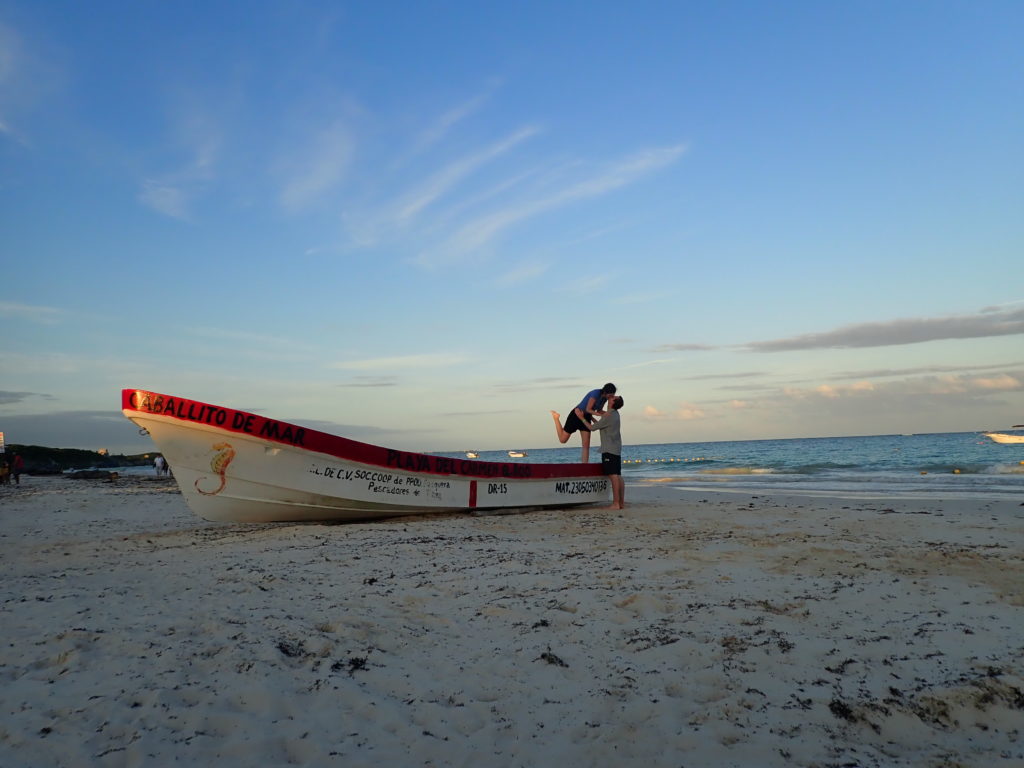
The Quintana Roo is the most touristic Mexican region with destinations such as Cancún, Playa del Carmen and Tulum. It is also the region of quieter little paradise such as Bacalar or Mahahual. Mass tourism gives this region a very different atmosphere from the rest of Mexico. It is more expensive, the prices are even offered in dollars to tourists, and the locals were surprised to hear us speak Spanish (here is our article on learning Spanish). Nevertheless, we understand the tourist hordes. Indeed this region is beautiful and has a lot to offer: proximity to a multitude of Mayan sites and cenotes, paradise beaches and accessibility to the second largest barrier reef in the world. All of this with good weather almost always assured. Finally, despite the higher prices compare to other regions of Mexico, housing and bus tickets are still very affordable. An excellent area for a road trip as it is easier and safer than in the rest of the country to drive.
We went up the coast using public buses over a period of 3 weeks (by making a 3-day detour in Yucatán). Here is a presentation of the different destinations we stopped at.
Bacalar and the 7 colours lagoon
Bacalar is a small Mexican town located on the lagoon of the same name, also called the 7 colours lagoon. The lagoon clear water comes from the region underground rivers and joins the lake by one of the 6 cenotes. According to theories, the cenotes are formed by the dissolution and collapse of land above an underground network of caves and rivers or by the fallout of the Gulf of Mexico meteorite.
The nest activity in Bacalar is to take a boat tour of the lagoon. There are many tour options. In order to visit different areas of the large lagoon we did two tours. Our favorite was the tour proposed by our host, which starts directly from the house Casa Sol y Luna. The owner knows the lagoon perfectly and can go to remote places thanks to his small boat. He customises the tours according to your desires and gives a lot of explanations. Snorkelling gear is also available on the tour and we swum in places far away from all the tourists. For example, we approached an abandoned hotel owned by a drug baron. The second tour we tested is proposed by Cucos Tours and starts from Laguna Bacalar hotel. They took us in a very comfortable boat to the most popular places of the lagoon, a very “standard” tour with few explanations (only in Spanish) and without snorkel equipment.
We stayed at Casa Sol y Luna, a very nice house on the edge of the lagoon overlooking a cenote. The rooms are comfortable, breakfast is included as well as access to the kitchen, the pool, the terrace and the hammocks with a great view. The hotel is located about 40 minutes walk from the village and the taxi cost us between 30 and 40 pesos.
In addition to the beautiful lagoon, Bacalar village is worth a visit. It is possible to visit the fort (or observe it from outside like we did) which was used to fight off the pirates and protect the local population. The fort is located right next to Zócalo (the main square) and small souvenir shops. For souvenirs, we strongly advise the visit of the shop of the artist Nhelida J. Guerrero Barrera in street Calle 20 in front of the Zócalo. You will be able to meet the artist who sells her own creations as well as the most affordable postcards.
To relax, eat, buy a souvenir or drink a coffee we recommend the garden of El Manati Bacalar. Clémentine’s favourite due to their self-service library which allowed her to exchange some books.
To fully enjoy the village and the lagoon we spent 3 nights there, however one or two nights are more than enough time.
Mahahual, Quintana Roo’s quiet paradise
To go from Bacalar to Mahahual we took a tiny ADO bus. We loved the small village of Mahahual (or Mahajual), a former fishing village transformed the day the cruise ships started docking there. No fears, however, the boats stop only a few hours and most of the passengers do not leave the port. You may come across some cruise ship crowd in the main street bordering the beach but almost none in the village heart. They did not stop us from enjoying this lost paradise.
It is also thanks to the cruises that activities such as the diving centres have developed. We passed our scuba diving certification there with Mar Adentro centre. More information on our article: visiting the underwater world: diving certification / PADI Open Water. We strongly recommend Mar Adentro for your diving and snorkelling trips. There are dives for all levels from Mahahual including wreck tours and canyons in the coral reef. Mahahual is also close to Banco Chinchoro, a popular spot for divers and snorkelers, which we unfortunately did not had time to visit.
We enjoyed the restaurant Nohoch Kay where we were able to eat seafood and fish facing the sea. For cheap and equally delicious restaurants we advise you to take a walk in the Huauchinango street parallel to the path along the beach, you will have a lot of choice and eat among locals. In the non-coastal residential part, we recommend Mr. Foody’s tacos or Divino Delicia Mexicana restaurant for Mexican classics. Do not miss the excellent Tartela pastry shop and the pizza and live music at Pizza Papi Pasta! It is very easy to cycle around the village or cover distances walking.
To sleep we chose the excellent Hotel Lavi. The owners are lovely and gave us very good recommendations. The rooms are very comfortable and we loved the decorations and the pool (perfect to train with the mask and snorkel for the certification). The hotel is not on the coast but in the residential part where the locals live and the restaurants are cheaper.
We stayed in this beautiful place for a week, the time required to pass our diving certification.
Tulum and the white sandy beaches
From Mahahual we took an ADO bus to Tulum (be careful there is only one bus a day). Upon arrival at the bus station we felt we were getting closer to the popular resort of Cancún. The atmosphere is more “jet-set”. The difference between the very nice area of the superb beachfront hotels and the city centre is striking. We stayed in a neighbourhood on the outskirts of the city with a nice French guy we had met a few days before in Belize.
In Tulum, do not miss visiting the Mayan ruins which offer a very different setting from the other ruins in Quintana Roo. Indeed, the ruins are perched on the sea edge. It is very easy to get to the ruins by colectivos (mini buses / shared taxis). Just board the first coming from the main street and have your money ready. We let ourselves be tempted by a boat ride (bought just before the entrance to the archaeological site) to observe the ruins from the sea, it was really worth it and offers a great overview. The boat trip also includes a snorkelling tour on the coral reef among many fish as well as rays and turtles! Swimming with turtles was a dream for us but we were concerned to see some boats feeding them. It was also a small space so full of tourists that it was hard not to get hit by a fin.
Tulum beach is beautiful, the sand is incredibly fine and the water turquoise.
The other point of interest in this city are the many cenotes around. They arise everywhere and are interconnected by underground rivers. We visited the Gran Cenote by renting bicycles for 80 pesos a day. The road is a little difficult for bikes but the cenote is beautiful, ideal for a relaxing afternoon. On the road, we had ceviche at El Dorado, an excellent value for money. The Gran Cenote was one of our favourite cenotes. We advise you to go with a mask so that you can watch the cavern entrances, maybe even sneak in.
Finally, we did a tour of the Sian Ka’an Biological Reserve, a UNESCO World Heritage Site. Many agencies sell very pricey tours. After many hesitations we chose Community Tour Sian Ka’an, which donates part of their revenue to the local communities and promote ecological and sustainable tourism. We did the old canal tour and crossed 2 lagoons linked by an ancient canal built by the Mayans before floating in another natural channel. Floating was a relaxing and fun experience. Finally, we went by boat to the beach through a last lagoon and watched crocodiles, manatees and birds.
We asked our host to give us his recommendations for local and cheap food in Tulum:
- El Tacoqueto for traditional homemade cooking.
- Sabor del Mar a seafood and fish restaurant for slightly higher budget.
- Taqueria Honorio a very popular taqueria which is opens until stocks are gone (go for breakfast or early lunches).
- We also enjoyed ice cream at Campanella, there were even sorbets for Clémentine who is allergic to lactose.
Playa del Carmen
We went to Playa del Carmen after our 3 days stop in Valladolid. We took advantage of the low hotel rates in the city centre. We stayed at Elefante Blanco studios rooftop and took a few days to work on the blog. It was also the opportunity for us to do our first dive after certification with the Reef Marina centre. We loved our dive at Tortuga and Barracuda. There are many dive sites for all levels leaving from Playa del Carmen, boats also go to Cozumel.
The dive boat leaves from The Reef Coco Beach, the beach behind the hotel is a very nice place which we recommend for a beach day!
We are recommending the following restaurants:
- La Bamba Jarocha a Mexican restaurant nearby our accommodation with very generous portions.
- El Pirata, a fish and seafood restaurant where you can pick your catch of the day on display.
- Acaramelao an ice cream shop located right next to El Pirata, ideal for a dessert. Some ice creams are lactose free.
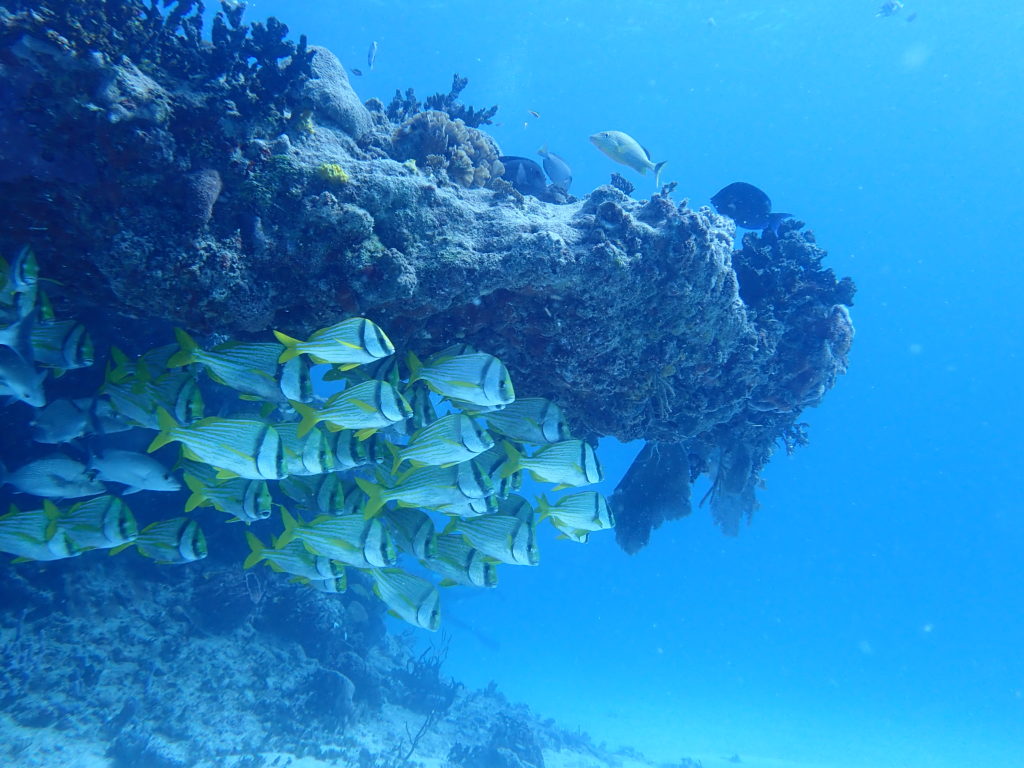
Cozumel and Puerto Morelos
Two places in Quintana Roo we did not visit but wanted to mention. We hesitated a long time about visiting Puerto Morelos which has the reputation of being quieter and less touristy destination. Here is an article from the excellent Amaixico blog on Puerto Morelos. Cozumel, on the contrary, seems ultra-touristy but has the is know for being one of the best place for diving and / or snorkelling on the coral reef.
Isla Mujeres
We made a day trip to Isla Mujeres from Cancún. We took the ferry from Gran Puerto with the Ultramar company for 300 pesos round trip.
We wanted to do a snorkelling tour on the island reef and at the Aquatic Museum. This museum seeks to demonstrate the coexistence between art and environmental sciences. Indeed, over time, marine life finds refuge in the statues and the coral formed. We opted for a tour with the Cooperative Isla Mujeres tours and were a little disappointed: the meal included was not very good and the snorkel equipment was bad. In addition, the fishes were fed at the beginning of the excursion, a useless and harmful gesture. The tour however allowed us to stop at the wonderful Tortugranja tortoise farm. They take care of the turtle eggs after laying to maximise the chances of infant turtle survival (very small, especially with the activities on the seaside) and prevent poaching. You can observe there three races of local turtles at different ages, until they are mature enough to be released into the sea. We loved the farm where we also saw sharks. The entry costs only 30 pesos. After this we strolled along the pretty beaches, including Playa Norte at the north of the island near the ferry port.
Cancún
We spent two nights in Cancún from where we flew to Costa Rica. The city differs enormously between the beachfront hotel zone and the city centre. Our accommodation, located in the centre far from the beach, was very comfortable with beautiful decoration. It available on Airbnb. We took advantage of being in a big city to go to the movie theatre.
As we were feeling nostalgic about Oaxacan cuisine, we ate at the Lindo Oaxaca restaurant for our last evening in Mexico.
Transportation
There are bus terminals in all cities in the region and it is very easy to use them. We used the ADO buses for each trip without making pre-reservations. The distances between each cities we explored are short and the buses are regular (except from Mahahual where you should check the schedules at least the day before).
We arrived from Belize to Chetumal by boat and we shared a taxi to get to Bacalar.
Clémentine’s Reading and Movies List
- The Rough Guide to Mexico if you visit other Mexican region or the Lonely Planet Cancun, Cozumel & the Yucatan travel guide.
- Like Water for Chocolate, from Laura Esquivel: a novel (adapted into a movie) whose magical realism refers to the great works of Latin American literature. The narration is punctuated with traditional recipes.
- The movie La Jaula de Oro about Guatemalan teenagers trying to reach the United States through Mexico.
- The movie Frida, which traces the life of the Mexican artist Frida Khalo.
- For children (and older children) the Disney movie Coco which apprehends very well Mexican traditions including the very important Día de Muertos.
Finally the Youtube video of the song Bacalar from Siddhartha, to put you in the mood.
Thank you for reading and leave us a comment if you have any suggestions.
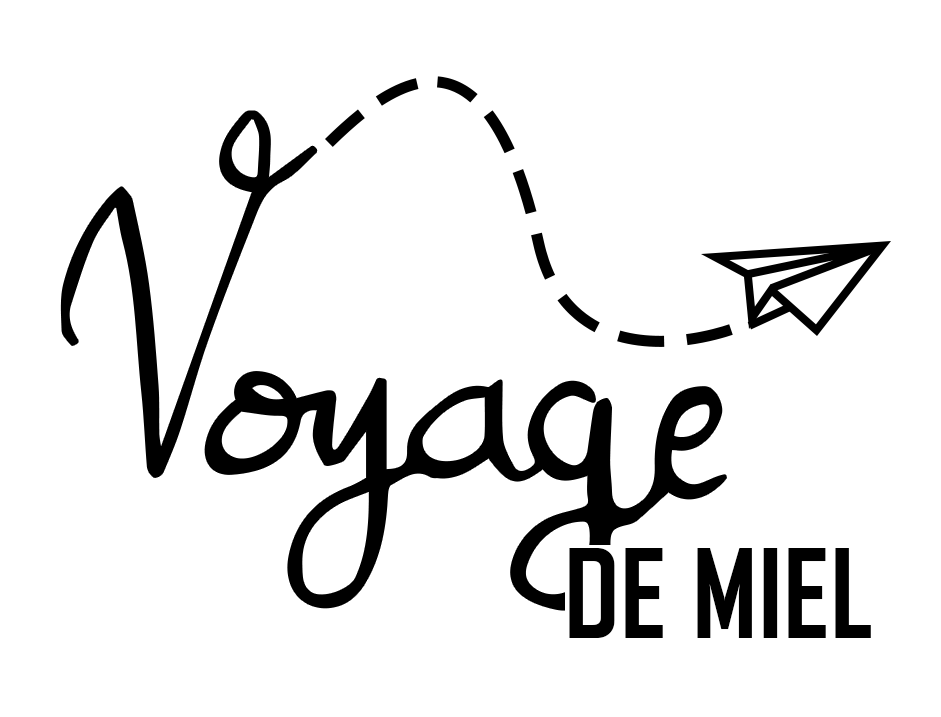
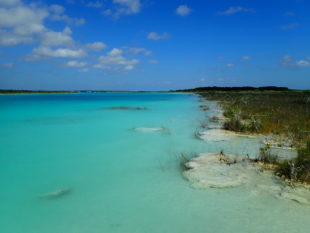
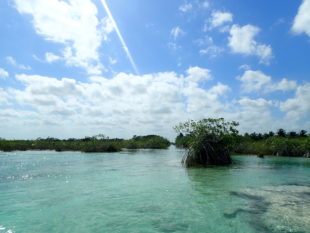
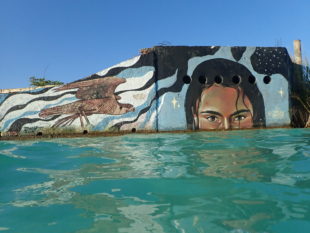
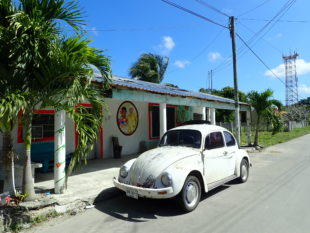
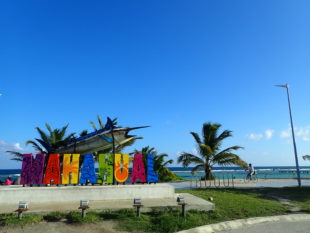
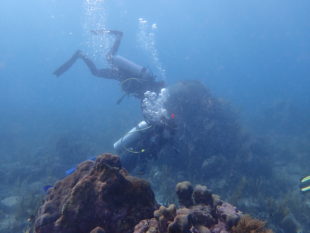
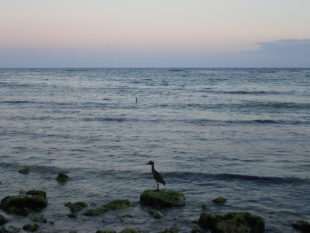
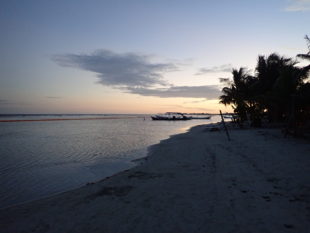
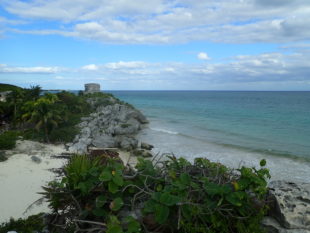
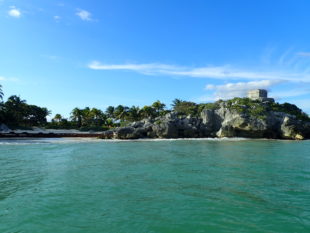
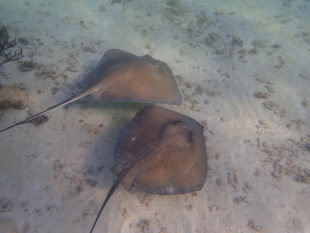
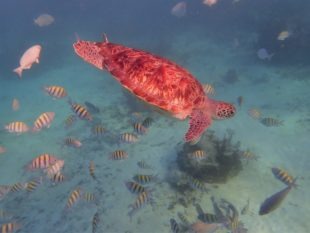
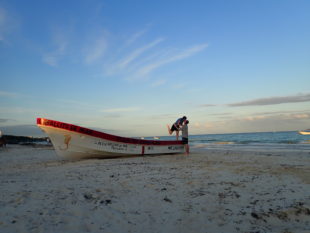
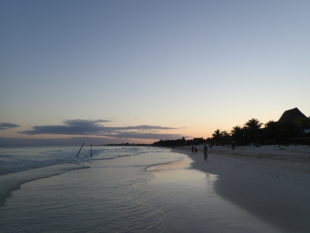
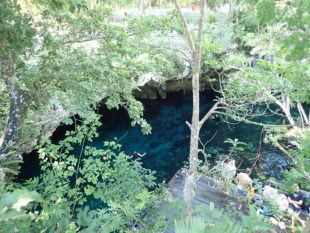
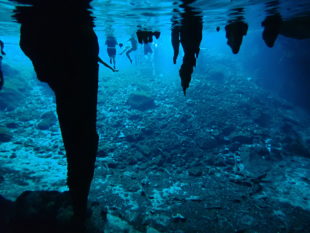
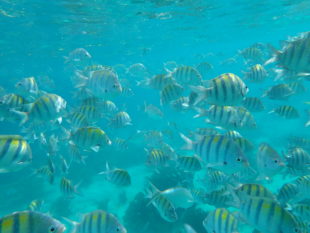
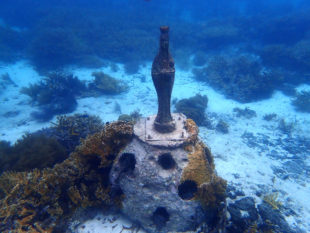
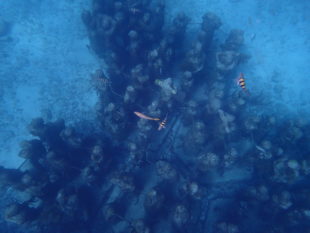
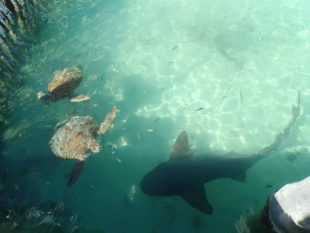
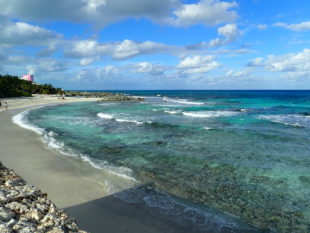
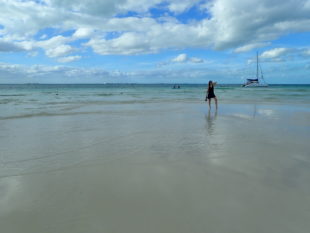
3 Comments
Ferny
January 18, 2019 @ 19:37
I’m so happy for you guys, I am sure that the places you have visited have been a wonderful experience. Thank you for sharing this post about such beautiful places in Mexico.
You made me want to go back to Mahahual and Bacalar!